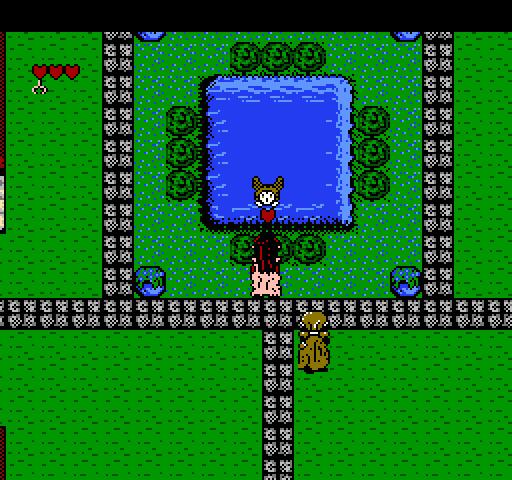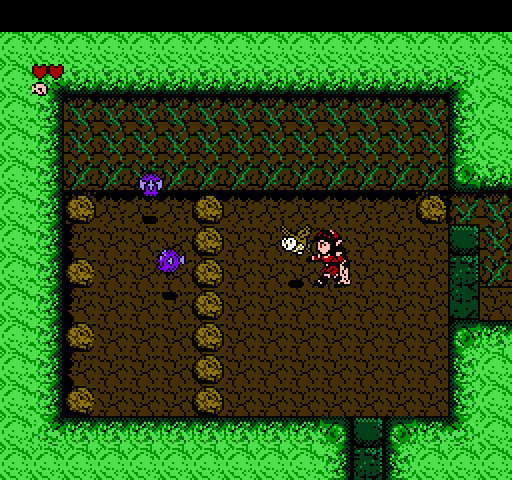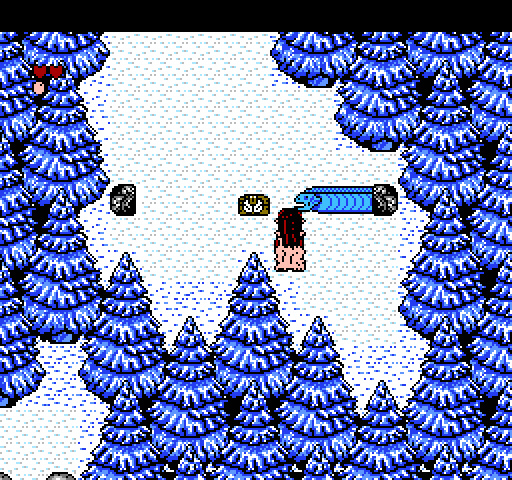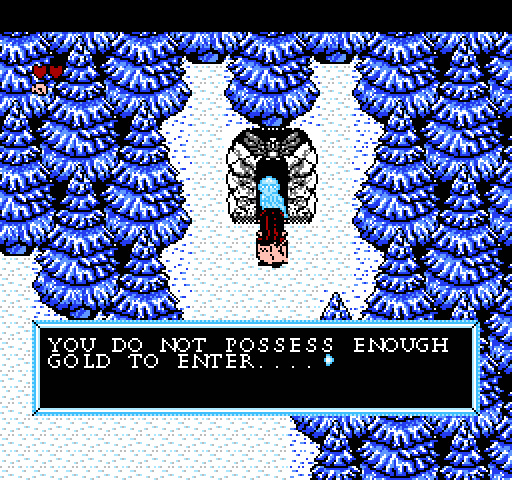NOTE: The Legends of Owlia is in the above video starting at 1:41:24!
First Impression articles are based entirely upon the first roughly 30 minutes of gameplay and may not necessarily be indicative of the game as a whole. This includes the score at the end.
The Legends of Owlia seems like it is so concerned with ticking every box in a checklist that it never stops to polish up anything. Though there are plenty of bits and pieces of nostalgia here, the experience as a whole feels completely sparse. This is a rather unusual game because it really does capture the feel of a NES game, but that includes various outdated design practices and many of the better mechanics are hamstrung by mediocre execution.
It’s a bit hard to pick a starting point since the problem here is one of the package as a whole not coming together rather than any one or two things in particular, but I’ll begin with the combat. You control Adlanniel and she has an owl named Tyto. Adlanniel is only capable of stabbing enemies at close range with a somewhat small sword. This is where Tyto comes in. Among other things, Tyto can be used as a living boomerang of sorts to attack enemies at a distance. You can’t attack as quickly with Tyto as with your sword and Adlanniel is locked in place for a split second while sending out Tyto, though you can still stab things once Tyto is in the air.

The issue when it comes to combat, at least early on, is Tyto is sort of boring to use. He’s slower than your melee attack and a good number of enemies take multiple hits. You could always use your sword, but the game discourages you from doing so. All of the enemies I’ve seen so far, aside from the first boss, only attack via contact damage, making melee a far riskier option. In fact, the first boss and several enemies within the first dungeon are either in the water or behind rocks, making your ranged attack the only tool available.
Melee could be useful if an enemy is nearby and Tyto is already flying through the air elsewhere, but this is a last resort for a rather specific situation. Perhaps there are enemies later on which can only be damaged with melee or have some other trait which makes using Tyto against them ineffective, though that is only an unfounded guess on my part. As it stands, the biggest incentive for using your melee attack is the boredom which begins to set in from repeatedly tossing out Tyto from a position of nearly complete safety.
Very little in this game feels like it is given enough time to breathe. Take the starting village as an example. It has a friend character, a tutorial character, a library with a handful of books to read for potentially useful future information, and a handful of other NPC’s which either give you a little lore or some cryptic hints. There are just enough NPC’s here to fill all the roles you would expect to see in a starting town and only a little more beyond that; it feels less like a town and more like a collection of NPC stereotypes to check off a few boxes. It’s not an awful town, though it is a very unremarkable one. There’s a legitimately interesting setting here where a land ruled by magical owls is being invaded by evil flying sea creatures, yet the game is so dead set on shoving you through its areas that you have little time to take anything in.

Pacing issues extend to well beyond the first town. The forest leading to the first dungeon is small and uninteresting. The first dungeon itself is slightly better. It’s a short dungeon, but it’s also an appropriate length for the very first challenge of the game. However, other than a key puzzle the individual rooms are forgettable; most rooms have about two enemies, all of which can slowly and effortlessly be defeated by Tyto. At one point you get a key at the end of a branch and then need to backtrack through several rooms, killing respawned enemies along the way to open doors, which makes for an unnecessary layer of tedium that could have been circumvented with a warp or some other one-way exit.
As for the dungeon’s boss, it can only be reached with Tyto and a long range attack by the boss initially makes it seem challenging. Unfortunately, the best strategy for defeating the boss is once again the most dull option – toss Tyto into its path and walk off to the completely safe area to the side before the boss reaches you. I’d be willing to chalk all this up to the initial region serving as a short introduction to the general flow of the game, but you’re forcibly flown off to a snow area after completing the first dungeon and this area is about as short as, and only slightly more engaging than, the forest and there isn’t a town.
Tyto is capable of more than attacking and this is where the game could potentially become more engaging later on. You unlock new abilities for your owl companion as the story progresses and you can only have two equipped at a time, though it’s easy enough to swap between them in the menu. In addition to his basic attack, Tyto starts with the ability to pick up objects. I also unlocked the ability to open doors and to toss around bombs by the time I reached the start of the second region.
All of these skills involve Tyto flying in a straight line for a different effect. Picking up objects is both useful in general and necessary for some puzzle solutions. The door unlocking ability felt like it should have been a passive effect and it’s unlikely to be used in a more engaging way later on. Bombs were needed to defeat certain enemies which acted as barriers in the snow area and tossing the bombs accurately requires some skill so this ability in particular could be utilized in clever ways.

The Legends of Owlia is very faithful to the NES era, which isn’t always a good thing. On the plus side, this is a PC port of a NES homebrew game so the art and music are completely authentic. On the decidedly less great side of things, this game also includes the lack of information and a fondness for needless, time-consuming grinding found in that era. Now, that bomb ability you get requires consumable bombs, which are only dropped by enemies, but this part is fine, at least so far. Even though bombs are needed to kill certain enemies and possibly for puzzle solving, enemies drop bombs at a fairly high rate. In fact, the enemies which require bombs to kill even seem to have a 100% chance of dropping bombs so as long as you don’t miss you end up gaining bombs in the process.
Currency is the main source of outdated game design. You see, you can’t just go into a dungeon once you find it. Instead, the entrance is blocked by an owl statue which will only move once you collect enough gold. How much gold? It doesn’t tell you, you just have to keep coming back to it after collecting some and check if it’s enough. As far as I’m aware, there is the only use for money. As to where you get money, it comes from treasure chests in the overworld areas and enemies. Chests give 1000 gold while enemies give 100 gold. Since gold is a random drop from enemies and the amount you need just for the second dungeon is 15,000, you definitely want to get money from chests.
On paper the currency system sounds like it’s a glorified key collection with drops from enemies serving as an alternative to collecting all the keys. In execution, there are two problems. First, chests refill whenever you leave a screen. This is a rather large problem because it incentivizes players to find an easy treasure chest near the start of a room and repeatedly take gold from it rather than exploring. In fact, I see nothing which could stop a player from opening the very first chest in the game several dozen times to hit the gold requirements for multiple dungeons. Sure, this method would be extraordinarily tedious, but, like in other areas, the tedious approach is the one which is encouraged by the game’s design.

The second problem with currency is more severe. There are not enough chests to gain dungeon access without opening the same chest multiple times or farming gold from enemies. For full disclosure, I went back and played the game a second time up to the point where I initially stopped in order to confirm this. The first dungeon can be accessed if you get every chest up to that point, but there aren’t enough chests for the 15,000 requirement on the second dungeon. There’s always the possibility that I missed some sort of secret which grants several thousand gold, though I think that’s unlikely. In short, not only does the game encourage you to abuse refilling treasure chests and/or to farm gold from weak enemies, but it outright requires it.
The Legends of Owlia lists StarTropics, Crystalis, and The Legend of Zelda as its main sources of inspiration in its description and in a certain regard this is its downfall. You can certainly see elements from those games here. From Tyto’s attack resembling Mike’s yo-yo to the Zelda-like dungeons, those sources of inspiration are clearly visible. However, this game seems so focused on the act of emulating as many elements from those games and the NES era in general as it possibly can that it fails to stop and consider the best way to implement those elements or if they actually need to be included in the first place. This is undeniably an authentic NES experience, but there are plenty of NES games with interesting ideas executed poorly and, judging by my time with the game, this seems to be one of them.
First Impression Verdict: Weak 2/5